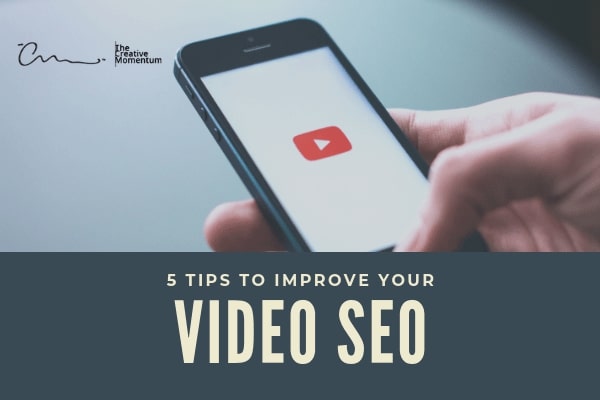
By now you know that if you’re going to have a website for commercial purposes, it needs to be optimized. In addition to following UX guidelines so that visitors want to spend time on your site, you also need to focus on SEO. Unless you don’t care about being discovered organically, or ranking in search, you need to follow best practices like adding metadata or keyword targeting. But did you know that even the content you create needs to be developed with SEO in mind? Specifically, if you want to integrate video into your website, or leverage it for marketing purposes, it’s essential to make SEO a priority.
Why Does Video Content Need to be Optimized?
Anything that’s published on the internet is searchable. This includes images, written content, and video clips. If you’re creating a video to serve as an inbound marketing tool to drive engagement and consumer interest, then you want to ensure that people can actually find that video. Say for example, that you want to launch a YouTube channel to complement your site.
According to recent YouTube statistics, every minute, over 500 hours of video content is uploaded to their platform. That’s a lot of content! So with that much video footage, how are you going to ensure that your video stands out from the competition and actually appears in search—not just on the YouTube platform but on Google? This is where SEO can help you. But what tips from “traditional SEO” can translate to video optimization?
1. Create Compelling Content
There aren’t enough white or black hat SEO tricks in the world to make people continue watching a video that is irrelevant or confusing. Consider these additional YouTube statistics:
- The average viewer will abandon a video within 10 seconds if it isn’t interesting.
- More than 50% of views come from mobile devices.
- Of the mobile viewers, the average YouTube session is 60 minutes.
The first statistic is sobering and highlights why creating relevant content is so important. 10 seconds is a very short amount of time to create a good impression. So, in addition to creating compelling content, this means that you need a strong intro that hooks your audience and keeps them watching.
2. Descriptions and Thumbnails that are Meaningful
With so much content on YouTube or even self-hosted videos found through Google, it’s important to make sure that your videos are properly attributed. This means that tags, titles, and descriptions should be relevant and clear. There are specific guidelines you should follow:
- Video file names and titles should include your target keyword. If necessary, research the keywords you want to use. But don’t upload a video with a file name of “BusinessPromo_v5.mp4” because that is what the search algorithm will crawl. Instead, if your video is about lawn maintenance, title it “SummerLawnCareTips.mp4”.
- Optimize your description. Descriptions can include relevant information that appears in search both on YouTube and Google. Leaving this blank or writing something irrelevant may cause people to skip over your video. YouTube allows a maximum of 1,000 characters, but experts recommend you stick to 100 so that your entire description will appear in search results.
3. Don’t Forget the Tags!
Just like if you were writing a blog post, YouTube allows you to add tags. These can help your content to appear in relevant searches. But more importantly, if you fine-tune your settings to allow YouTube to suggest your video after similar content from other channels has played, those tags will help your content to be identified by the algorithm.
4. Make your Thumbnail Image Interesting
Thumbnails are the pictures that appear next to your video title and description. Browse through YouTube and you’ll find that the most watched videos tend to have similarly styled thumbnails. While you can use a randomly generated screenshot from your video, this isn’t recommended. If necessary, pull your graphic designer aside and ask him or her to help you create a thumbnail that’s visually appealing and draws users in. Yes, UX is at work here.
5. Cards, Captions, and End Screens
Depending on your industry, there’s no set guideline that your video must be a certain length. But there are things you can do to help make your content easier to watch and more digestible.
- Cards: If you are covering a large number of topics or complex material, cards can help to clearly outline each topic and make it easier for viewers to follow along.
- Captions: If you have the bandwidth to go the extra mile, actually create a script and then build captions from it. In addition to helping viewers who are hearing impaired, it can also improve your SEO and search rank.
- End Screens: You’ve probably watched videos where at the end, related content from that same channel appears with in-video links. This is a great way to keep your audience in your ecosystem, engaged, and ideally drive them to eventually click onto your website.
Whether you opt to self-host your video content or use a platform like YouTube or Vimeo, these tips can drive interest and engagement. And when you’re ready to embrace video marketing, The Creative Momentum can help you create content that resonates with your target market and ranks in search results.


